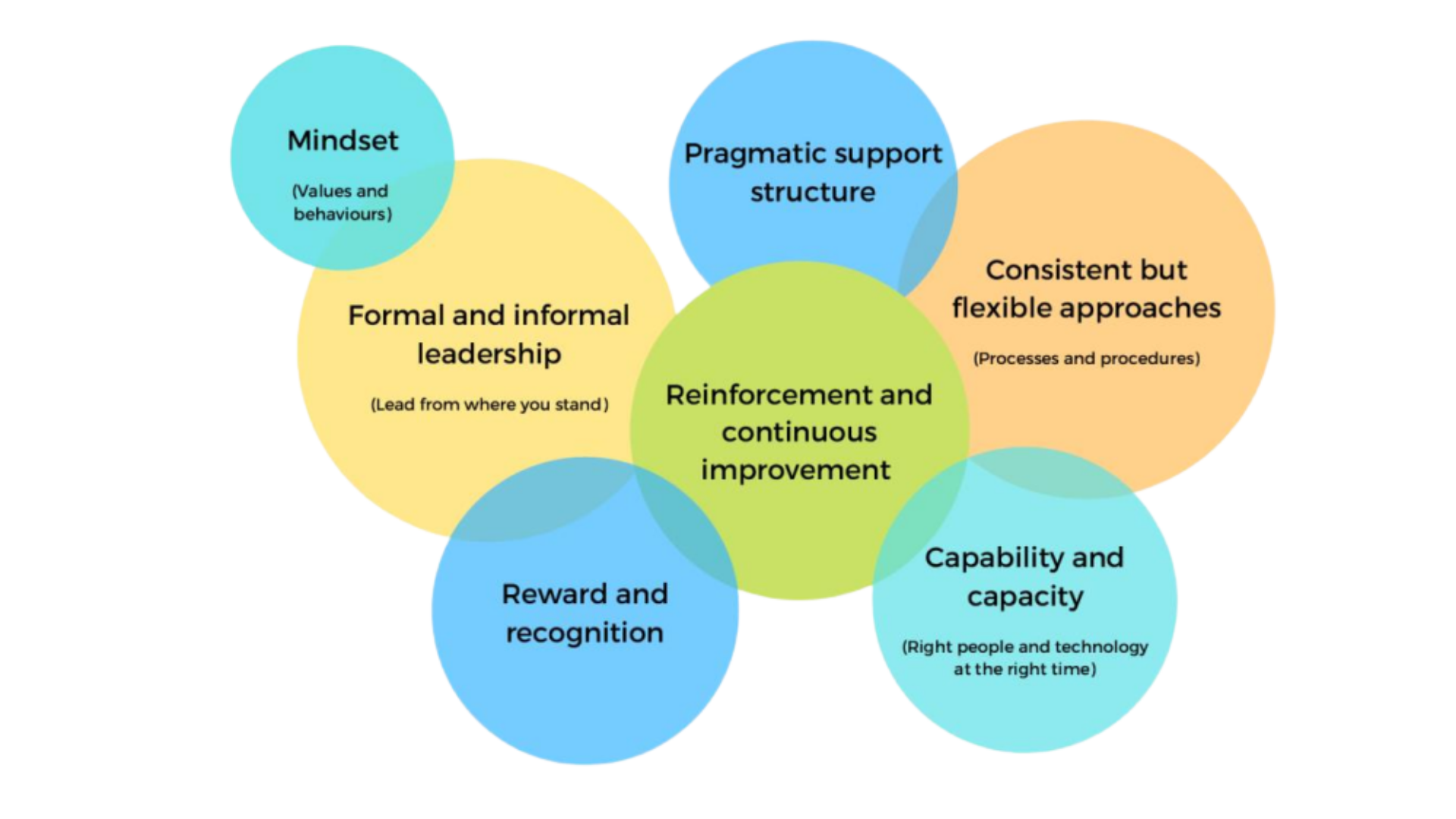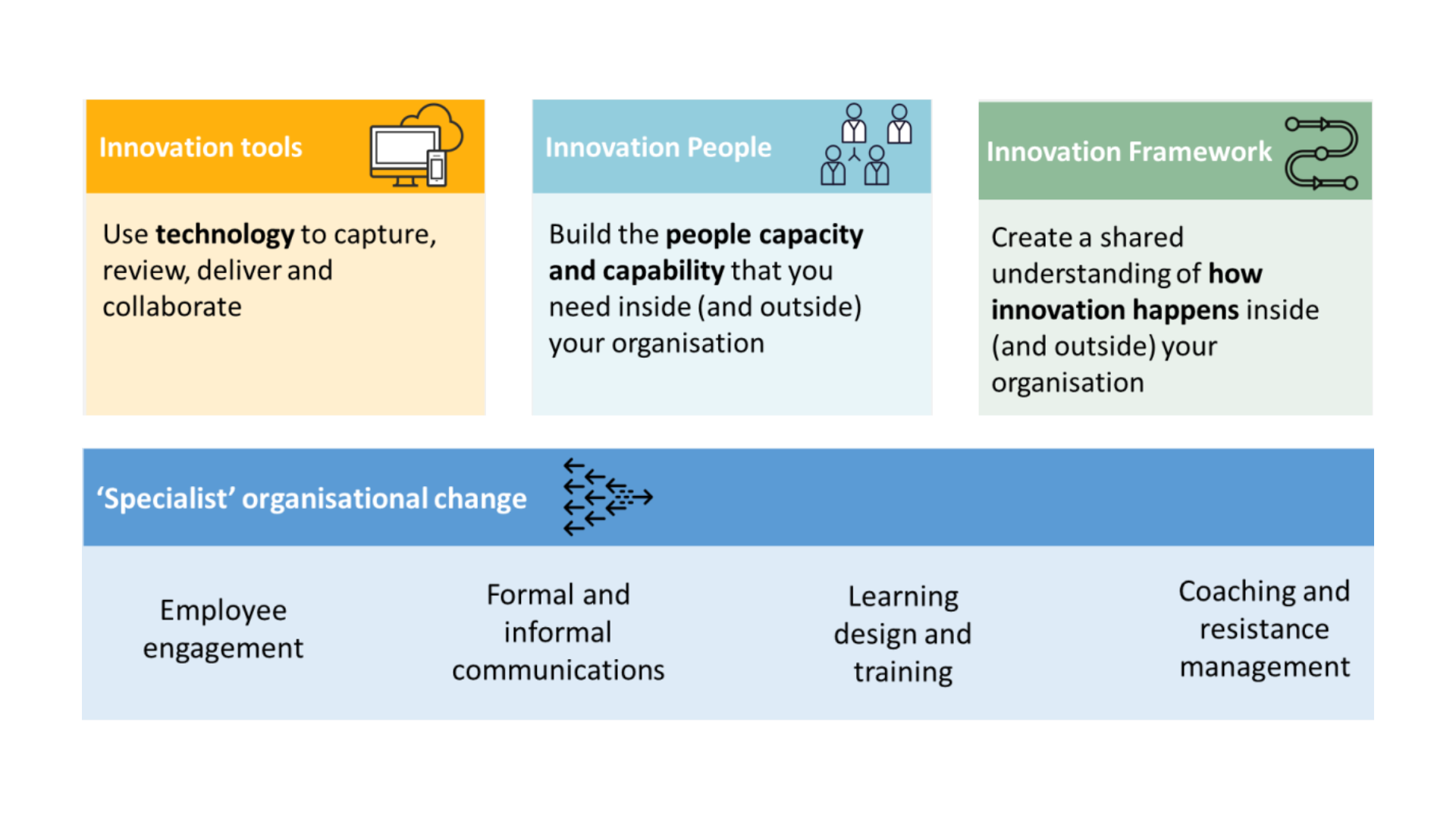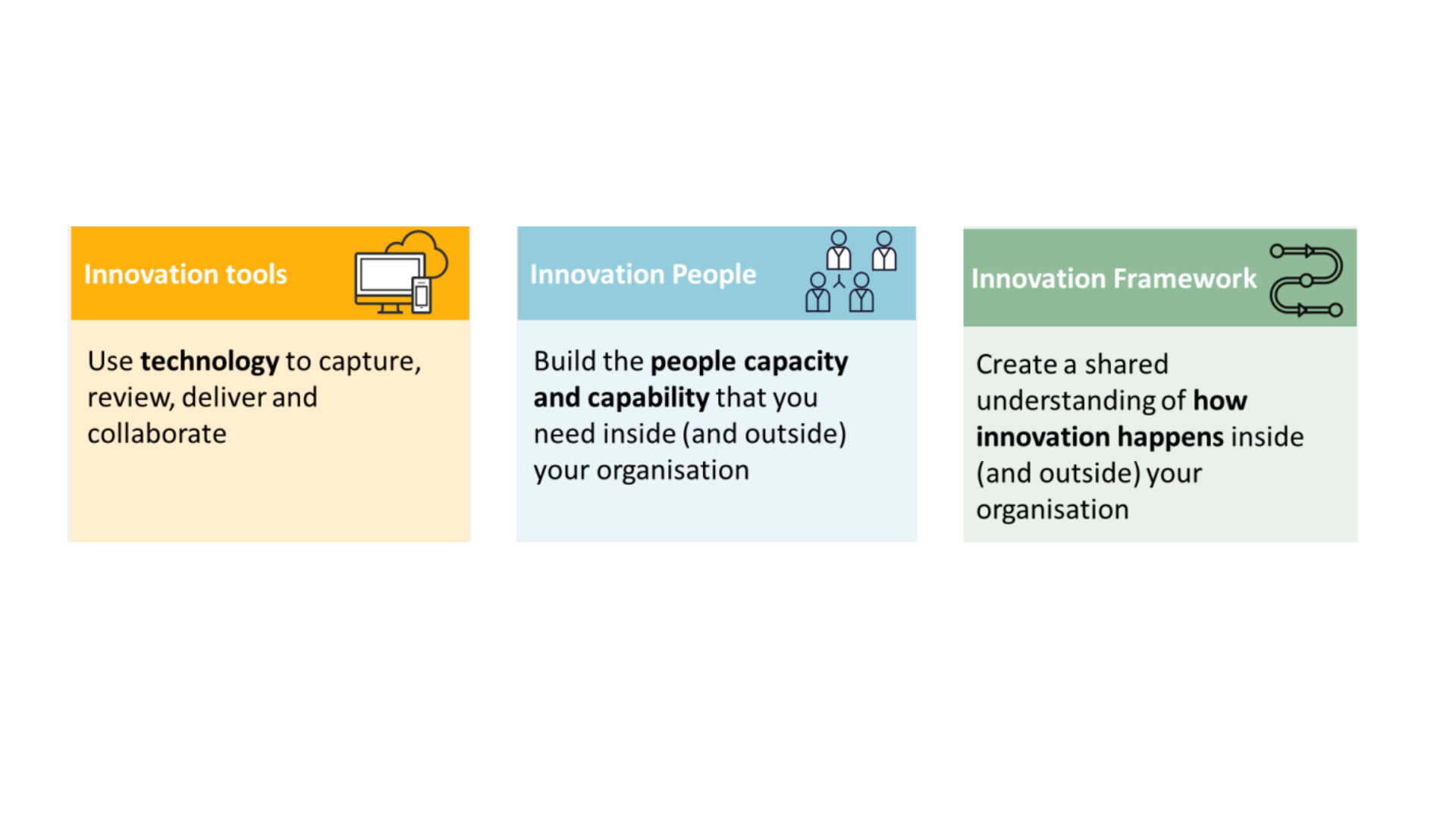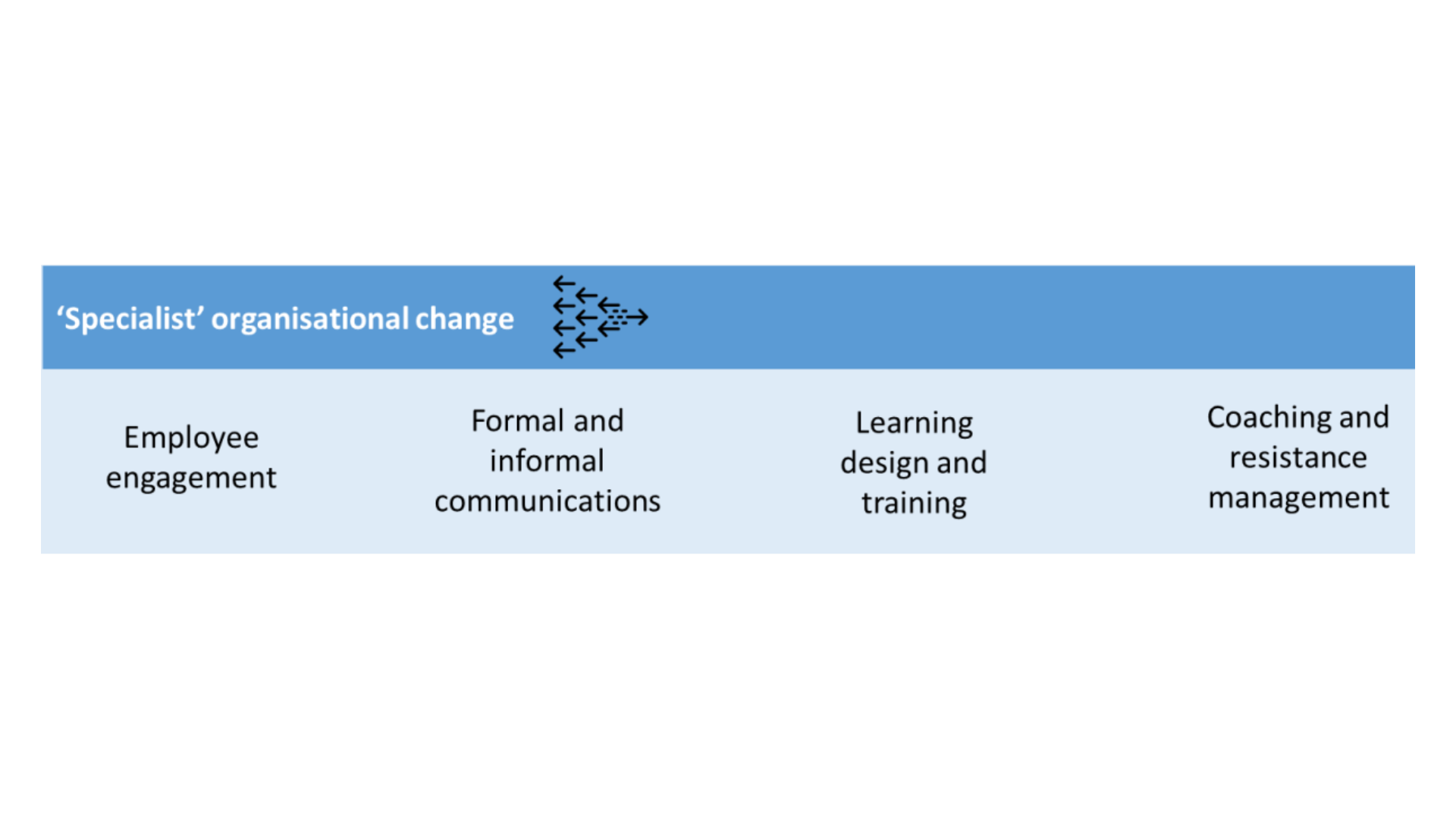Innovation Management Maturity Model: Guide to improving how your organisation manages innovation.
Does innovation only happen on the fringes of your organisation? Do you feel that your organisation should be doing more inventing and less improving? Are fresh ideas struggling to be translated into action?
Today, we’ll be introducing Consulcad’s Innovation Management Maturity Model. This framework helps to benchmark how well your organisation manages innovation, building a deeper understanding of where you are and where you want to be on your innovation journey. Our Model describes the tools, people and framework needed to reliably deliver outcomes.
But first, it is important to understand the difference between innovation management and maturity:
What is innovation management?
Innovation can happen in organisations either through accident or design. While there’s always someone who will argue that you can’t force people to be innovative, the research shows that a company-wide approach drives innovation performance.
Designing how your organisation innovates, also known as innovation management, focuses on having a fit for purpose approach to how you plan, organise, monitor and control invention and improvement activities. Innovation management has three key building blocks – tools, people and frameworks – that are made to stick through effective organisational change. Getting it right is important as it enables your organisation to stay relevant, engage employees meaningfully and deliver better products and services.

Figure 1 | Great ideas need an innovation culture to stick


Figure 2 | How we bring innovation management to life

What is innovation management maturity?
For most organisations, innovation happens through a mix of accident and design. There isn’t a straight path from ‘command and control’ ways of working formed over several decades to the ‘inclusive and iterative’ approaches that today’s biggest challenges demand. To make this path easier, Consulcad has designed an Innovation Management Maturity Model. Capability maturity models are a well-established benchmark for comparison – a way to understand where your organisation is, where it wants to be and how it might get there.
The first capability maturity model was developed using research conducted by the US Department of Defence during the 1980s and has since been adapted to a number of different other industries and challenges. Our model, informed by comprehensive research and experience solving innovation challenges, provides a structured set of maturity levels that describes the people, processes and tools needed to reliably deliver outcomes. The higher the maturity, the more consistently you organisation can deliver outcomes

Figure 3 | Consulcad’s innovation management maturity levels
Why does innovation management maturity matter?
Understanding your organisation’s maturity isn’t just an academic exercise in benchmarking. There are many benefits to knowing how you stack up. The top three are to:
- Support the case for investment: Maturity models show the benefits that are unlocked at each leap of the maturity journey. Buy-in is built through meaningful conversations that are sparked by the innovation management maturity review process, whether that be one-on-one interviews or review of the findings.
- Provide confidence that you are headed in the right direction: Maturity assessments help to chart a course for how you will get from where you are to where you want to be. It creates a shared understanding of the pace of change, which smooths the way for making decisions about people, structures, approaches and technology.
- Measure success: Maturity scores can be used to set baselines and targets for individual and team key performance indicators. For those that are competitive at heart, having a score that needs to be improved is a great motivated.
How do I do an innovation management maturity assessment?
To create an innovation management maturity assessment there are three main steps to follow: how it is designed and how it is completed.
STEP 1: Design the assessment
There’s three main variables that need to be defined in the designing process:
- Area of focus: Assessments can be focused at a team, department or organisation level. It’s common for different areas of an organisation to be at different maturity levels.
- Resources: Assessments can either be completed by someone within your organisation as a self-assessment or by an independent third-party (hint: Consulcad does independent assessments!).
- Identify your maturity assessment tool: you are welcome to use ours – it’s based on the CMMI standard.
STEP 2: Complete the assessment
Assessments are most accurate when they review published documents and interview key people in your organisation. Our approach is to:
- Understand where you are today.
- Understand where you want to be in the future.
- Calculate your maturity score using our Innovation Management Maturity Assessment Tool.
- Identify actionable steps to get from where you are and where you want be.
- Share insights and seek buy-in for change.
STEP 3: Translate an assessment into action
The value of an assessment relies on its translation into what it means for your organisation. Talk to us today about how we can help make innovation mainstream in your organisation with the right mix of innovation tools, people and framework. We make it real.

